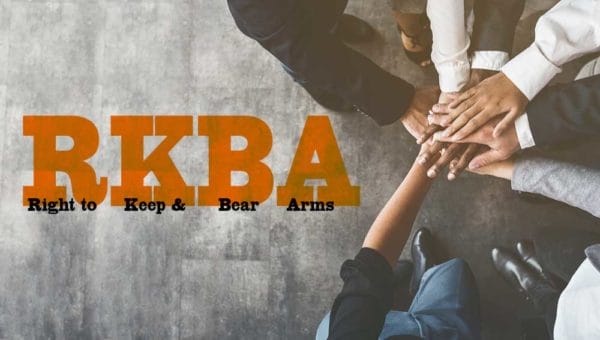Opinion

New York – -(AmmoLand.com)- The late, eminent Associate Justice of the U.S. Supreme Court, Antonin Scalia, writing for the majority, announced in Heller, what was always patently clear, but often denied: that the right of the people to keep and bear arms is an individual right.
Anti-Second Amendment State Governments, as well as the Federal Government, are always looking for a way to avoid the import of Heller to affirm the legality and Constitutionality of State Action infringing the core of the Right protected.
The first major attack against Heller took shape in the Anti-Second Amendment jurisdiction of Chicago, Illinois, with the City pointedly arguing that the Heller rulings pertaining to the right of Americans to utilize handguns for self-defense in their own homes, only operates as a constraint on the Federal Government, not on the States. Justice Alito who penned the majority opinion in the second major Second Amendment case, McDonald vs. City of Chicago, set forth at the outset of his remarks, the nature of and extent of Chicago’s defiant stance on the matter:
“Two years ago, in District of Columbia v. Heller, 554 U.S. 570, 128 S. Ct. 2783, 171 L. Ed. 2d 637, this Court held that the Second Amendment protects the right to keep and bear arms for the purpose of self-defense and struck down a District of Columbia law that banned the possession of handguns in the home. Chicago (hereinafter City) and the village of Oak Park, a Chicago suburb, have laws effectively banning handgun possession by almost all private citizens. After Heller, petitioners filed this federal suit against the City. . . . They sought a declaration that the ban and several related City ordinances violate the Second and Fourteenth Amendments. Rejecting petitioners’ argument that the ordinances are unconstitutional, the court noted that the Seventh Circuit previously had upheld the constitutionality of a handgun ban, that Heller had explicitly refrained from opining on whether the Second Amendment applied to the States, and that the court had a duty to follow established Circuit precedent.”
The McDonald case made clear the rulings in Heller applied to the States too. In pertinent part, Justice Alito wrote:
“. . . we must decide whether the right to keep and bear arms is fundamental to our scheme of ordered liberty. . . .
Our decision in Heller points unmistakably to the answer. Self-defense is a basic right, recognized by many legal systems from ancient times to the present day, and in Heller, we held that individual self-defense is ‘the central component’ of the Second Amendment right.
Heller makes it clear that this right is ‘deeply rooted in this Nation’s history and tradition. . . .
In Heller, we held that the protects the right to possess a handgun in the home for the purpose of self-defense. Unless considerations of stare decisis counsel otherwise, a provision of the Bill of Rights that protects a right that is fundamental from an American perspective applies equally to the Federal Government and the States. We, therefore, hold that the Due Process Clause of the Fourteenth Amendment incorporates the Second Amendment right recognized in Heller. The judgment of the Court of Appeals is reversed, and the case is remanded for further proceedings.”
Yet, the apparatus of Anti-Second Amendment forces in Government remained undeterred. These forces continued their efforts to find ways around Heller and McDonald through more and more comprehensive and Government licensing schemes.
State and local Government firearms’ licensing schemes became progressively bloated through time, and with that bloat, the language of them became increasingly vague and ambiguous; and, in the worst instances, became convoluted, inconsistent, and incoherent. Anti-Second Amendment Courts continually, blatantly misinterpreted the rulings of Heller and McDonald, setting down their imprimatur on unconstitutional Government actions.
Perhaps the most voluminous Anti-Second Amendment regime to be constructed and one of the earliest, and one of the most insidious; a regime that was continually expanded and revised through time, is that one emanating from New York.
Not surprisingly, the first major case the U.S. Supreme Court accepted for review, almost a decade after the seminal Heller case, was New York State Rifle & Pistol Association, et.al. v. The City Of New York And The New York City Police Department-License Division, commonly and colloquially referred to as the “New York City Gun Transport Case.”
The case held a lot of promise for Americans who cherish their right of self-defense and the right of personal autonomy, for having granted Petitioners’ writ of certiorari, these Americans expected quite reasonably that the U.S. Supreme Court would apply its precedents in Heller and McDonald to affirm the unconstitutionality of the constraint on one’s right to keep and bear arms for self-defense, outside the home, at least for the purpose of transporting a handgun to a locale outside the environs of New York City. New York’s Courts had hitherto placed burdensome constraints on transportation of handguns outside the home for those New York residents who held valid but restricted handgun premise licenses.
Although some Americans might see the New York Gun Transport case as a win for those who cherish the right of the people to keep and bear arms, it wasn’t. Rather, it was a lost opportunity. A consideration of and a decision on the merits of the case were sidestepped.
Americans who cherish their Second Amendment right are now looking to a second New York case, NYSRPA vs. Corlett (now captioned, NYSRPA vs. Bruen) on which to pin their hopes for reaffirmation of the significance of the Heller imperative.
The case will be heard in November 2021 and decided probably at some point in early summer, 2022.
Our concern is whether and to what extent—even with a complement of three new Justices, all Trump nominees, who would seem to adhere to the methodology of the late eminent Associate Justice Antonin Scalia, when analyzing and deciding cases—the Bruen case will be decided in a manner that will reinvigorate and clarify the rulings and holdings and reasoning of Heller and McDonald.
To get a good handle on the New York Bruen case, and to assess various outcome scenarios, it is necessary to understand what transpired in the earlier New York Gun Transport case, along with a few major post-Heller D.C. gun cases and others.
Our focus going forward will be directed to the elucidation of four matters:
- The Import Of Government Firearms’ Licensing Schemes Generally And Those Of New York Particularly
- The Framing Of The Specific Legal Issue By The U.S. Supreme Court In The Bruen Case
- Standards Of Review Employed By The Federal Circuit Courts After Heller
- A Perspective On The Jurisprudential Approaches Of The Justices
As for the first bullet point, firearms licensing schemes are a fact, and Heller’s position on them isn’t crystal clear. The mere fact of them and the propensity of Courts to align themselves with Government to stamp their imprimatur upon them are inherently in tension with the import and purport of the Right of the People to Keep and Bear Arms, a tension that Heller did little rectify.
As for the second bullet point, the Court has recast the issue for review. This recasting of the issue is critical to the decision to be reached and we will speculate on why the Court recast the issue and analyze what that may portend.
As for the third bullet point, many lower Courts have routinely fallen back on judicial standards of review that majority opinion in Heller considered and rejected. The High Court may wish to clarify the standard that should be employed in Second Amendment cases where the Government actions impact the core of the right.
And, ss for the fourth bullet point, while the legacy Press constantly refers to the High Court as comprising 6 Conservative-wing Justices and 3 Liberal-wing Justices. That is an incorrect statement. The Chief Justice, John Roberts, who wields considerable power as the Chief Justice, is not to be seen as an avid proponent of the Second Amendment, and, apart from Associate Justices Clarence Thomas and Samuel Alito, whose commitment to the defense of exercise of the Right embodied in the Second Amendment is established beyond doubt through a large body of Supreme Court Opinions, those of the newest members of the Court—Neil Gorsuch, Brett Kavanaugh, and Amy Coney Barrett—are not firmly established. Further, in the case of Kavanaugh, along with Chief Justice Roberts, it is manifest from their handling of the New York Gun transport case, that these two Justices demonstrate substantially less ardor toward and devotion to the Second Amendment than do Associate Justices Thomas and Alito and as did the late esteemed Associate Justice Scalia.
Chief Justice Roberts and Associate Justice Kavanaugh do not employ, with the same consistency, the juridical methodologies of textualism and originalism, heralded by and championed by the late Justice Scalia. This is apparent from their handling of the legal doctrine of “mootness,” which led to a less than optimum result in their handling of the New York Gun Transport case as a decision on the substantive merits of the case were dispensed with.
We discuss these matters in-depth in our upcoming articles.

About The Arbalest Quarrel:
Arbalest Group created `The Arbalest Quarrel’ website for a special purpose. That purpose is to educate the American public about recent Federal and State firearms control legislation. No other website, to our knowledge, provides as deep an analysis or as thorough an analysis. Arbalest Group offers this information free.
For more information, visit: www.arbalestquarrel.com.
The post Looking Backward To Heller & Mcdonald & Forward To NYSRPA vs. Bruen appeared first on AmmoLand.com.
from https://ift.tt/3jSCUvh
via IFTTT

No comments:
Post a Comment